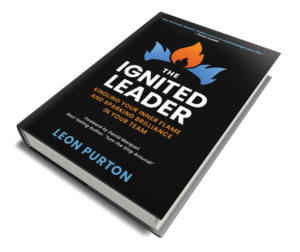Your prediction is probably wrong. Find out why before you start.

There is a trend that has been around for a while in areas of management, it is called the pre-mortem. First spoken about by Gary Klein in a 2007 HBR article he introduces the concept of asking your team to diagnose what went wrong when their project spectacularly failed — before they’d even launched.
Different from a post-mortem (or after-action review), which uses all the evidence to work backwards and find the medical cause of death. A pre-mortem uses the whole teams gut-feeling, intuition, and withheld reservations to identify weaknesses in the execution plan.
If this is done right your team can either design out those flaws and strengthen areas of weakness, or they can develop strategies to cope with the identified failure points. But how do you run a pre-mortem? Let me tell you.

Predicting the Future
Humans are notoriously bad at predicting the future. We are overly optimistic, we believe that the things that have happened previously are a complete set of what could happen in the future, and when we see new information we automatically use it to support our position rather than disprove it.
This is due to our cognitive biases. These mental heuristics limit our ability to predict the future well. We all subconsciously believe we know the best.
I have previously written about the fact that
100% of the stories we tell ourselves are true, even if they aren’t.
Because of this, if we start telling ourselves about the success of our projects and teams, the forecasted profits or efficiencies, the awards or recognition it is because we truly believe it will happen.
This is a wonderful thing, you can achieve so much with a positive mindset. However, it can also be powerful to be purposeful about being negative. Looking for a way for the negativity to serve as a foundation for success.
There is an adage that “luck is where preparation meets opportunity”. This is what I am talking about here. Wouldn’t it be nice to be a little luckier?
Well, it turns out that you can be luckier. If we want to get better at predicting the future. Then you have to start asking yourself, what’s the worst that could happen?
Expect the best. Prepare for the worst. Capitalise on what comes — Zig Ziglar
The worst? Do a Pre-Mortem
You are getting ready to release your new software build. Or you are about to kick-off a new and unique marketing strategy. Perhaps you are doing a first of type operation for the company. Well, before you start, you should get the team together and ask them to write down everything that could go wrong.
What is the worst that could happen? How could this fail?
Conducting a Project Pre-Mortem
Provide context — you need to let the team know that you are not doing this to find reasons for the project to fail, you are doing it so you can plan for it to succeed.
There is a risk that the team will lose heart when they hear all the reasons it could fail. But with the right context, they will see that doing this provides the project with a foundation for success.
Brief your team and support staff on the goals, strategy and success criteria for the project. Then get your team to tell you how the project failed.
Some people in your team and support staff are naturally more pessimistic than others and may have thought widely about this already. Others will have seen aspects of the plan and current body of work and have a few seeds of doubt. There may be some that have not thought about it at all. But all of them will be able to come up with something.
Your job is to give them permission to.
Assemble this list by getting each person to read their list. Do not get defensive, do not try and argue around aspects because you have more context or information. Just listen and write. This needs to be unfiltered and based on gut-feel and intuition.
Pay attention to what keeps coming up, pay attention to the ideas that get others heads moving, capture them all. Once you have all of them down, pick a few common ones from the list and ask the team for ideas about how to mitigate that risk of failure.
This is important. You need to let the team know you are interested in fixing it with them. That they have a role in helping the project succeed, that these failures are also now theirs to stop from happening.
What now?
You have now removed your cognitive biases. You have an idea of the vulnerabilities to your plans. You have a foundation for which you can succeed.
You need to take this information and fold it into the project strategy. Raise them as risks and track them in your risk and opportunities register. Each of these risks also has an opportunity attached to them. Work out how to flip the script.

Streamlining the future
There is only one kind of shock worse than the totally unexpected: the expected for which one has refused to prepare― Mary Renault
You have an opportunity to streamline your future by being more deliberate about understanding what could go wrong. Now that you are aware of the things that could go wrong, you have an opportunity to prepare for them.
There are often leaders who are celebrated for their ability to handle a crisis, but even better than that, are the leaders that do not have to handle a crisis because they have already planned that out of their future.
This is part of the tension a leader needs to balance. Positivity and promotion of the idea, the why, the alignment of the purpose of the team. With the purposeful study of what could cause a failure. This is a difficult tension and requires true leadership.
You, of course, can apply this to other parts of your life. Having discussions with your Personal Advisory board will help you understand some aspects of your personal future that you may not be considering.
You have the tools, do what you can to streamline your future success, and capitalise on what comes.
Expect the best. Prepare for the worst. Capitalise on what comes — Zig Ziglar
I aim to create a little Spark inside of the reader’s mind, that could form into a flame in their soul. You are capable of more than you know. You may just need a prompt. I hope this finds you where you are, and offers you a little hope that your hard work is worth it.
How to be a great leader by balancing tension
Why it is hard, and why you should try medium.com
